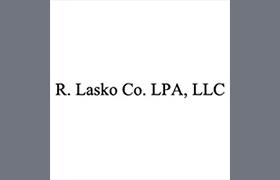Pierpont Reorganization Lawyer, Ohio
Sponsored Law Firm
-
 x
x

Click For More Info:
-
R. Lasko Co. LPA, LLC
1406 W 6th St STE 200, Cleveland, OH 44113» view mapBusiness, Estate, Real Estate, Employment Competent Legal Representation
Let R. Lasko Co. LPA, LLC handle all your legal needs today!
216-574-2602
Not enough matches for Pierpont Reorganization lawyer.
Below are all Pierpont Bankruptcy & Debt lawyers.
Jerome Albert Lemire
Energy, Federal Appellate Practice, Elder Law, Bankruptcy
Status: In Good Standing Licensed: 48 Years
Malcolm Stewart Douglas
Family Law, Criminal, Bankruptcy, Accident & Injury
Status: In Good Standing Licensed: 35 Years
Michael Allen Hiener
Family Law, Juvenile Law, Bankruptcy, Personal Injury
Status: In Good Standing Licensed: 38 Years
Kyle B Smith
Estate, Divorce & Family Law, Criminal, Bankruptcy & Debt
Status: In Good Standing Licensed: 44 Years
David Lester Mccombs
Commercial Real Estate, Estate, Consumer Rights, Bankruptcy
Status: In Good Standing Licensed: 50 Years
Richard Brian Kotila
Real Estate, Government, Estate, Collection
Status: In Good Standing Licensed: 62 Years
Anne Marie Reese
Social Security, Employee Rights, Administrative Law, Bankruptcy
Status: In Good Standing Licensed: 39 Years
Michael Philip Geary
Bankruptcy & Debt, Accident & Injury, Divorce & Family Law, Lawsuit & Dispute, Estate
Status: In Good Standing Licensed: 35 Years
Jane Timonere
DUI-DWI, Corporate, Bankruptcy, Personal Injury
Status: In Good Standing Licensed: 24 Years
Gary Leo Yost
Workers' Compensation, Family Law, Personal Injury, Commercial Bankruptcy
Status: In Good Standing Licensed: 50 Years
 Ronald Lasko Cleveland, OH
Ronald Lasko Cleveland, OH AboutR. Lasko Co. LPA, LLC
AboutR. Lasko Co. LPA, LLC
